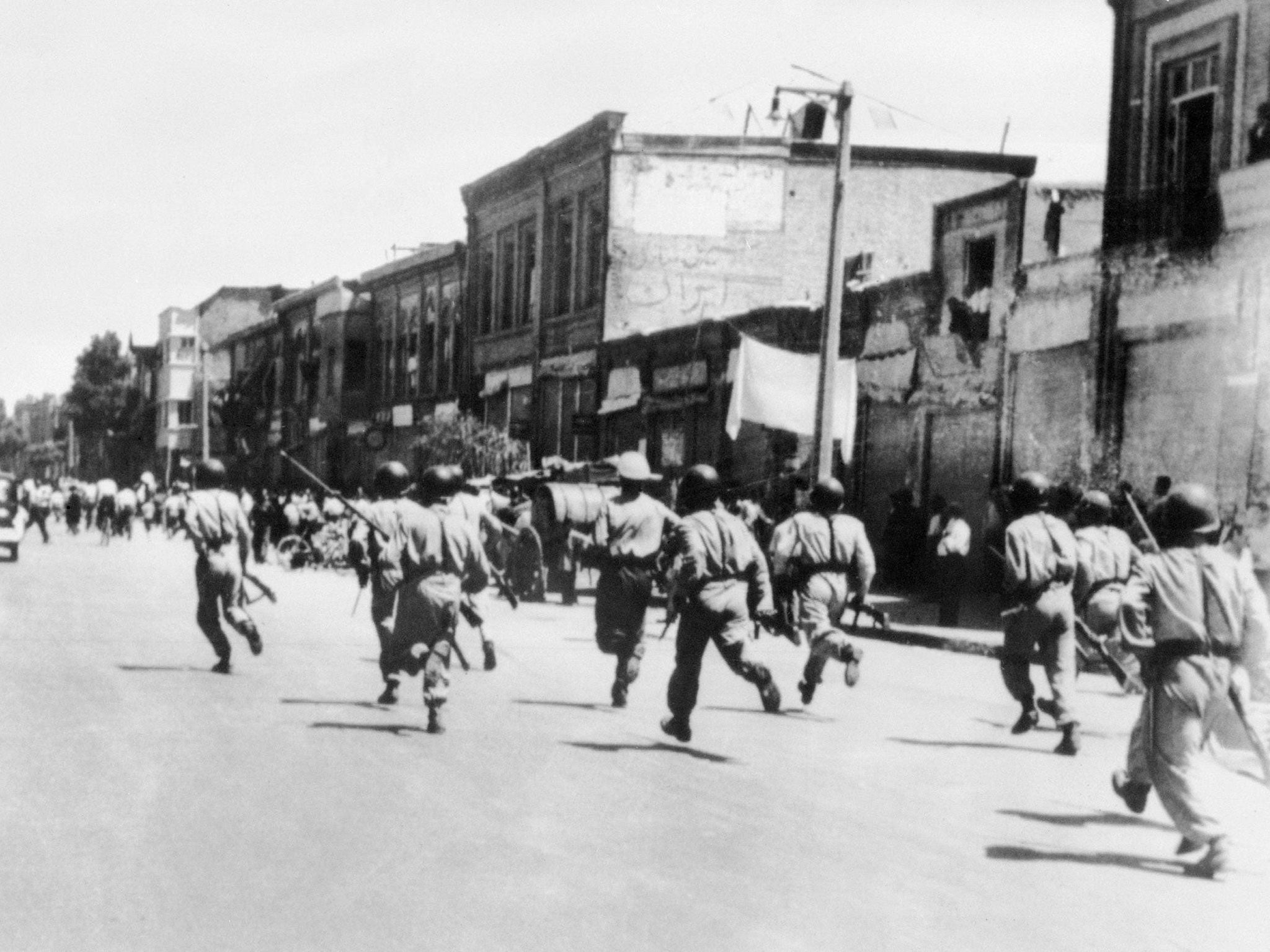Sixty years on, CIA finally admits role in Iran coup
Sixty years on, declassified documents have finally revealed that the agency was behind the 1953 coup – as Iranians long suspected

The events of 19 August 1953 have cast a long shadow over modern Iran and its political rivals.
Generations of Iranians have blamed the US intelligence agency and its British partners for planning and executing the coup that overthrew Iranian Prime Minister Mohammad Mossadegh, and two US presidents – Bill Clinton and Barack Obama – have publicly owned up to their nation’s involvement.
But yesterday, precisely 60 years on, the CIA finally formally acknowledged its own role in a declassified document published by the independent National Security Archive research institute at George Washington University in Washington, DC. The confession comes in an extract from “The Battle for Iran”, an internal CIA report written by an in-house historian, which dates back to the mid-1970s. The crucial excerpt reads: “The military coup that overthrew Mosadeq and his National Front cabinet was carried out under CIA direction as an act of US foreign policy, conceived and approved at the highest levels of government.”
The CIA’s admission arrives at an inconvenient moment for Iran’s new moderate president, Hassan Rouhani, who came to power in June promising a break from the adversarial foreign policy style of his predecessor, Mahmoud Ahmadinejad. Rouhani, who won a landslide election victory, recently appointed Iran’s former UN envoy Mohammad Javad Zarif to be his foreign minister; Zarif is said to have been at the heart of negotiations with the US to try to break the diplomatic deadlock between the two countries, which arguably stems from the events of 1953.
Mossadegh’s overthrow led to 26 years of authoritarian rule under the Shah, Mohammad-Reza Shah Pahlavi, who was backed by the US but ultimately overthrown himself in the Islamic Revolution of 1979. The anti-Americanism generated by the coup also inspired the students who seized the US Embassy in Tehran during the 1979 revolution. More recently, the coup was invoked by President Ahmadinejad during the dispute over his country’s nuclear programme; Ahmadinejad demanded an apology for 1953.
The declassified account of the coup begins by relating the political backdrop to the CIA’s intervention. Mossadegh had been elected prime minister in 1951. One of his first acts was to nationalise the country’s oil industry, which at the time was controlled by the British-owned Anglo-Iranian Oil Company – later renamed BP. The British government, dismayed by the potential loss of its most precious foreign asset, called for a worldwide boycott of Iranian oil.
According to “The Battle for Iran”, Mossadegh “had become so committed to the ideals of nationalism that he did things that could not have conceivably helped his people… In refusing to bargain… with the Anglo-Iranian Oil Company, he was in fact defying the professional politicians of the British government. These leaders believed, with good reason, that cheap oil for Britain and high profits for the company were vital to their national interests.”
The US, meanwhile, believed Mossadegh’s actions left Iran “open to Soviet aggression” just as the Cold War was escalating. British Prime Minister Winston Churchill and US President Dwight D Eisenhower approved the coup, which was codenamed “TPAJAX” by the CIA, but known to British intelligence as “Operation Boot”. The mission began by promoting anti-Mossadegh propaganda, bribing members of the Iranian parliament, and enlisting the Shah to take part.
An attempt to arrest Mossadegh on the evening of 15 August failed, but on 19 August a mob paid by the CIA rioted in Tehran, and then marched on the Prime Minister’s residence. According to Donald N Wilber, one of the planners of the coup, who wrote his own account shortly afterwards: “The Army very soon joined the pro-Shah movement and by noon that day it was clear that Tehran, as well as certain provincial areas, were controlled by pro-Shah street groups and Army units… By the end of 19 August… members of the Mossadeq government were either in hiding or were incarcerated.”
According to Wilber, within days the CIA gave the new regime $5m to help provide stability. Many of Mossadegh’s supporters were imprisoned or executed. As many as 800 people may have been killed. Mossadegh was convicted of treason and sentenced to three years in jail; he spent the rest of his life under house arrest and died in 1967.
Speaking in Cairo in 2009, President Barack Obama acknowledged the role of the US in the coup, saying, “In the middle of the Cold War, the United States played a role in the overthrow of a democratically elected Iranian government.”
Yet the CIA has waited until now to openly admit its involvement, not least in order to maintain good relations with the British secret services, which have always been reluctant to reveal their part in Mossadegh’s ousting – even though the episode has long been public knowledge.
The National Security Archive’s Deputy Director Malcolm Byrne, the editor responsible for analysing the declassified documents, said the agency ought to release any remaining records relating to the period. “There is no longer good reason to keep secrets about such a critical episode in our recent past,” Byrne said. “The basic facts are widely known to every school child in Iran. Suppressing the details only distorts the history, and feeds into myth-making on all sides.”
Join our commenting forum
Join thought-provoking conversations, follow other Independent readers and see their replies
Comments